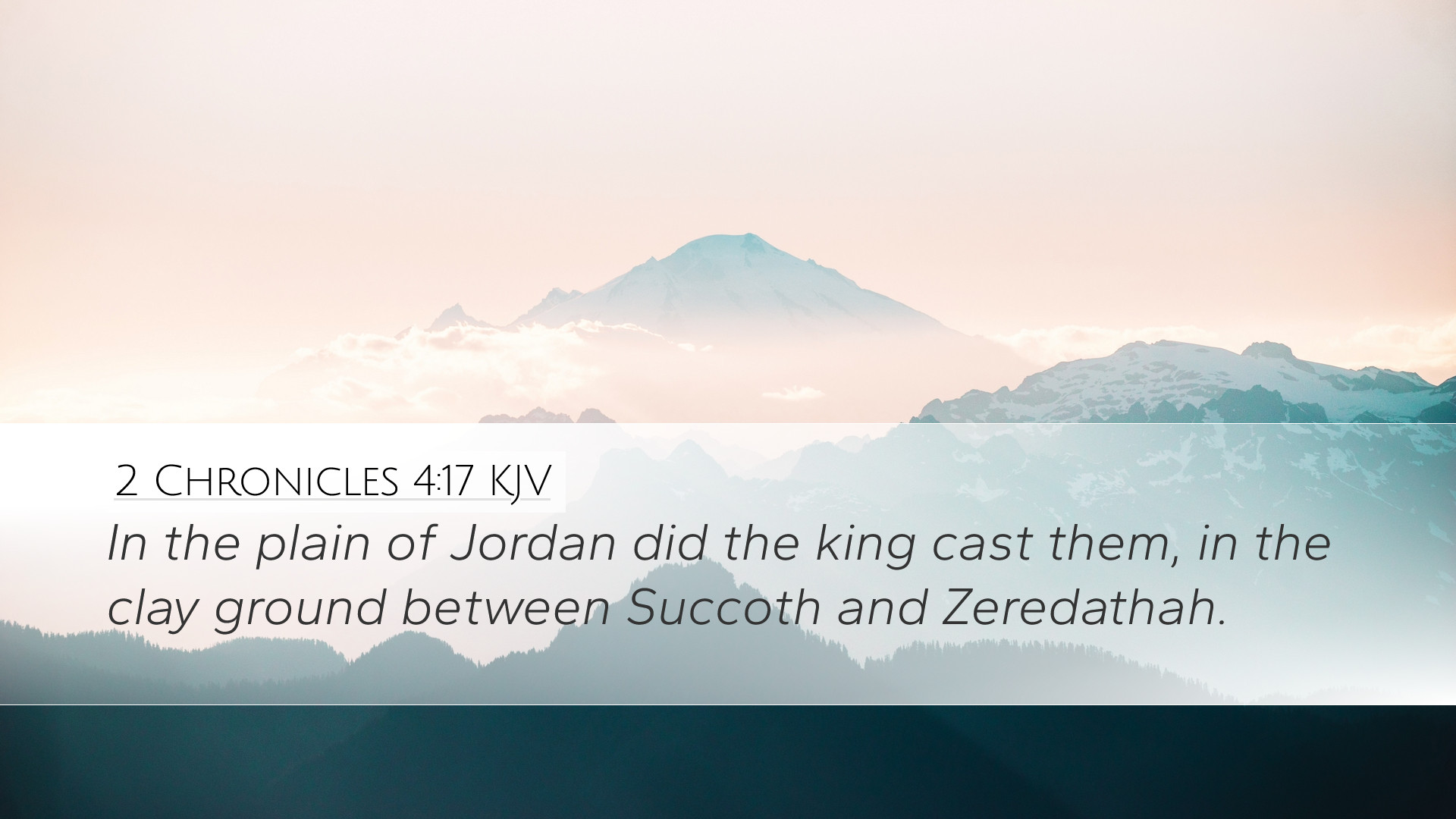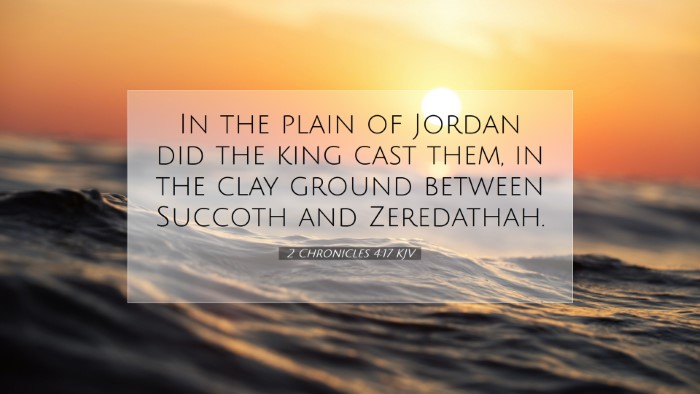Commentary on 2 Chronicles 4:17
Verse: 2 Chronicles 4:17 - "And he made a molten sea, ten cubits from the one brim to the other: it was round all about, and his height was five cubits: and a line of thirty cubits did compass it round about."
Introduction
This verse depicts the construction of the "molten sea," a significant item in Solomon's temple service, representing both the beauty and the grandeur of the sacred space devoted to worship. The "molten sea" served a practical purpose in ceremonial cleansings, embodying the intersection of the divine and the material.
Historical Context
The construction of the temple under Solomon marked a pivotal moment in Israel's history, emphasizing the shift from the tabernacle to a permanent dwelling place for God among His people. The molten sea was not merely an artistic creation but also held theological significance.
Insights from Matthew Henry
Matthew Henry observes that the molten sea is a representation of God’s grace, providing us with the means for purification. He emphasizes its dimensions and the meticulous design, which offers insights into the wisdom with which Solomon governed. Henry goes on to explain that the sea, being round, symbolizes infinity and completeness, symbolizing the all-encompassing nature of God’s grace and the infinite need for purification among His people.
Insights from Albert Barnes
Albert Barnes provides additional insights regarding the dimensions of the molten sea. He comments on the fact that the thirty-cubit line suggests that the sea had a substantial depth, indicating both its functional capacity and its symbolic meaning as a source of life and purity. Barnes highlights that such constructions were not merely for ornamentation but served as reminders of God’s holiness and the necessity of maintaining purity in worship.
Insights from Adam Clarke
Adam Clarke adds a theological layer to the understanding of the molten sea by connecting it to the New Testament's teachings on baptism and the cleansing of sin. He suggests that the sea prefigures the spiritual cleansing available through Christ. Clarke emphasizes the imagery of water throughout scripture, applying it to both physical cleansing rituals and the spiritual cleansing through the Holy Spirit.
Theological Significance
The molten sea stands as a testament to the intricate relationship between the material objects in worship and their spiritual representation. Each element of the temple, including the molten sea, pointed towards deeper truths about God’s nature and the relationship between humanity and the divine.
- Symbol of Purification: The cleansing properties of water are central to many biblical narratives, reflecting purity that believers must embody.
- Divine Provision: The abundance of water in the molten sea illustrates God’s provision for His people’s spiritual needs.
- Worship and Reverence: The artistry and scale of the construction emphasizes the reverence due to God within worship practices.
Application for Today
For pastors, theologians, and students of the Bible, understanding the symbolism behind objects like the molten sea is crucial for comprehending the depth of scripture. Such studies yield insights into God's character, encourage deeper worship, and reinforce the importance of maintaining purity in our lives as reflections of our relationship with Him. This verse challenges us to recognize how everyday materials can embody deep spiritual truths.
Conclusion
In conclusion, 2 Chronicles 4:17 serves as a reminder of the intricate design of God's temple and His grace towards His people. The molten sea, a work of both beauty and function, points us toward God’s desire for purity and the necessity for believers to engage with the sacred aspects of their faith actively. Through the reflections of Matthew Henry, Albert Barnes, and Adam Clarke, one can observe how this passage resonates through history and remains impactful for contemporary faith and practice.


